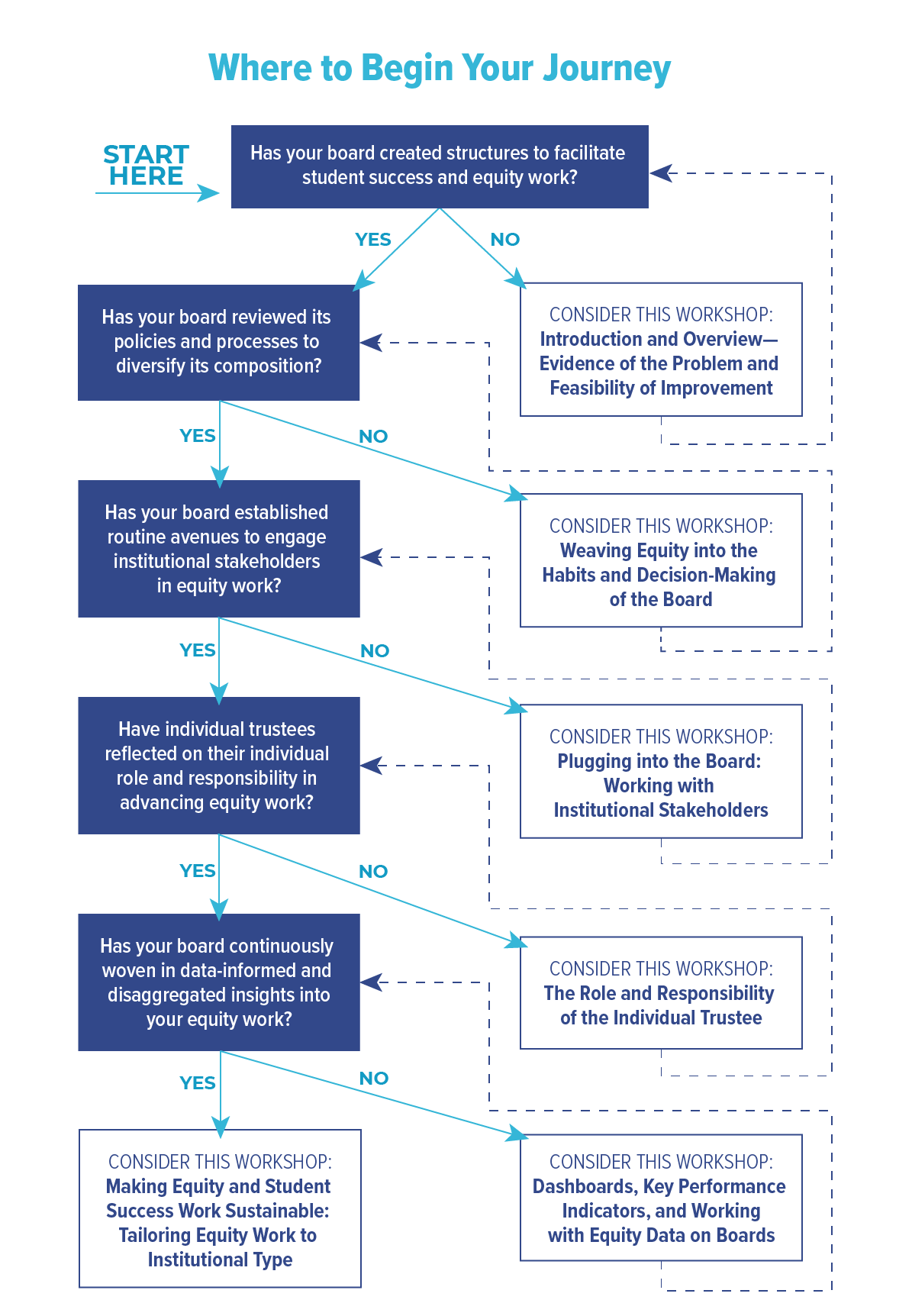Board Responsibility for Equitable Student Success
Planning Your Journey
Planning Your Journey

Sustained inquiry (asking key questions) is a board’s most useful tool as it fulfills its fiduciary duties. Boards will need to ask intentional questions of themselves and institutional stakeholders. Much of our research has demonstrated that an institution can be doing intentional work regarding equitable student success without board engagement and vice versa, so it is helpful to ask questions at two levels. Aligning board and institutional efforts is the best approach for sustained progress on equitable student success.
Asking questions without taking action toward improvement is not enough. Boards can use the map above to understand where they are in their journey and identify what outcomes they should focus on next.
“Developing a deep understanding of equity issues among board members and familiarity with strategies for increasing retention and graduation rates—and eliminating equity gaps—should be an ongoing priority. It should be part of the agenda for every board meeting and the focus of special retreats and workshops.”
Carlton Brown, EdD
Senior Consultant, AGB and Project Co-Director